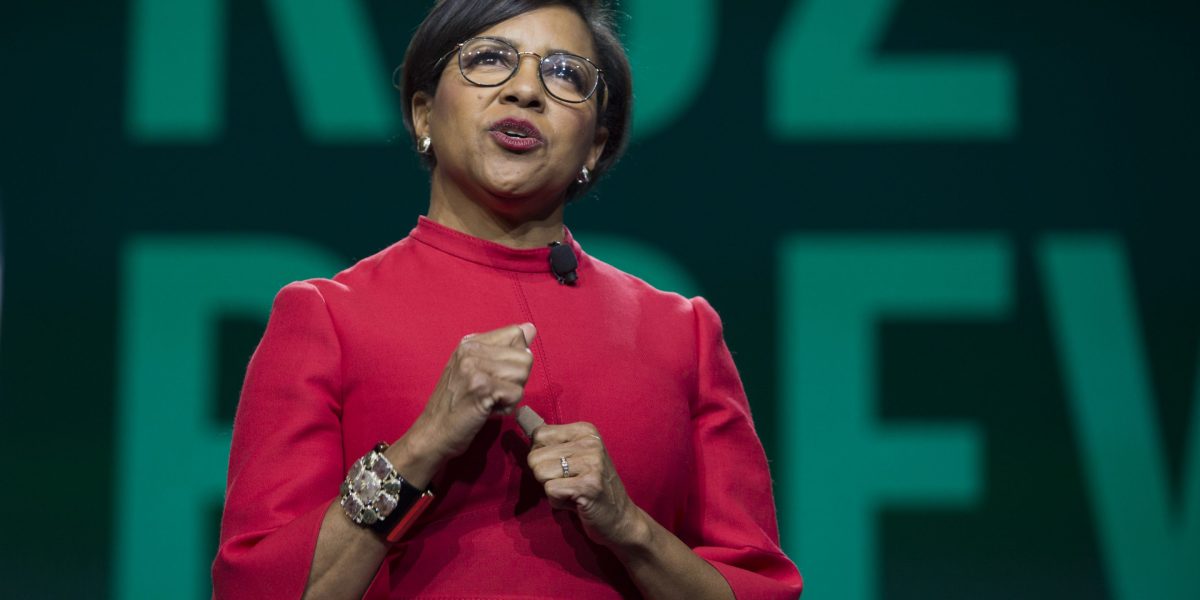This is the first question I attempted to answer when I established the race beat at Fortune exactly five years ago this month. At the time, there had been fifteen Black CEOs in the history of the Fortune 500, with five still on the job.
Today, as we wade into the grim truth-telling that is Black History Month, we are facing the same question.
“In the history of the Fortune 500 list, first published in 1955, there have been only 19 Black CEOs out of 1,800 chiefs,” says my colleague Phil Wahba in this must-read-and-share piece. And, as anyone who has been paying attention has repeatedly noted, nobody is coming. “More worrisome, observers and executives agree, is that there is no quick fix, given the years it takes to groom someone for the C-suite,” Phil writes. “A major source of the problem is that too few Black businesspeople are put on a management track early in their career, in which a promising executive is given oversight of a business with its own profit and loss (P&L) benchmarks, the measures by which superiors and the board assess whether someone is CEO material.”
With the thrilling news that Roz Brewer, currently Starbucks Chief Operating Officer, has been tapped to become Walgreen’s next CEO, she is now one of 40 women running a Fortune 500 company—and currently, the only Black one. With TIAA CEO Roger Ferguson Jr. stepping down at the end of March, that brings the total number of Black Fortune 500 CEOs to four: Brewer, Ken Frazier at Merck, Marvin Ellison at Lowe’s and René Jones at M&T Bank.
Oh, hang on… breaking news… Merck CEO Ken Frazier just announced that he will be stepping down at the end of June.
Sorry, folks. We’re back to three.
A short time after she left her role as Xerox CEO, I interviewed Ursula Burns for The Black Ceiling, an inside look at the many reasons Black executive women are not making it to the C-Suite. It was a similarly dispiriting moment. She had been the first Black woman ever to run a Fortune 500 company. When she left in 2017, there were none. (Mary Winston became the second, after she briefly led Bed Bath & Beyond as interim CEO in 2019.)
She was unflinching in her assessment of the problem.
Black women tend to get shunted away from positions of real impact and end up in career cul-de-sacs that eliminate them from consideration. “HR isn’t going to get you there,” she says. “Communications and the arts aren’t going to get you there. So, now look at the numbers of women we have now. Unless you’re bringing people in from Mars, it’s going to be a while.”
Sensing a pattern?
Burns, in an episode last fall of our Leadership Next podcast (Apple/Spotify), told Fortune CEO Alan Murray and me about her quest to advocate for top down change via her Board Diversity Action Alliance, a no-nonsense plan to diversify corporate boards to better address the utter lack of progress in corporate diversity.
Turns out, the pattern is a huge part of the problem: Everyone’s ideal short list for Black board talent is ridiculously out of touch. Board chairs routinely ask her for a list of Black folks who have already run a Fortune 500 company or similar. “That’s like a list of 25 people,” Burns says, which utterly ignores the remarkable talent that exists in a wide variety of positions and industries. “I promise you, white people are not held to that same standard.”
Lowe’s CEO Marvin Ellison, formerly of J.C. Penney, appears on that short list twice. He is the only Black person to be CEO of two Fortune 500 companies, and he nearly didn’t make it the first time. “[A]t Home Depot, where he spent many years, he jumped to store management, giving him a P&L by which to measure him as he rose up,” says Wahba. “He was passed over in 2014 when Home Depot changed CEOs, and he went to Penney.”
The executive pipeline then, is thin by blind spot and design. To solve it, we have to think beyond central casting as we develop Black executive potential early and often.
But to really change things, we should revisit the premise of my first-ever corporate diversity story, and all the ones that came after: The path to the C-Suite starts from birth.
It takes 22 years to grow an entry level employee, and a lot goes wrong for people along the way. Right now, a future CEO—or doctor, engineer, filmmaker, Nobel Prize winner, journalist, supply chain genius, or fill-in-the-blank—is about to be lost in a human pipeline that has been invisibly leaking for generations. The reasons are many and related. Inadequate housing and education. An unsafe neighborhood and lack of fresh food. Under-resourced parents with no access to credit markets in dead-end, soon-to-be-replaced-by-automation jobs. An unresponsive health care system. The criminal justice “system.” Not to mention the constant low-level exhaustion of living in a country that wants to wave away white supremacist norms like so many gnats from an errant puddle.
Black CEOs are all around us, if we would let them grow.
Ellen McGirt
@ellmcgirt
Ellen.McGirt@fortune.com

